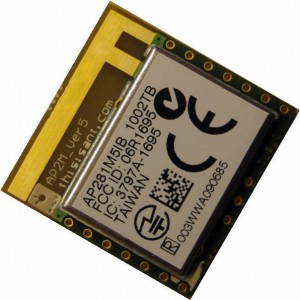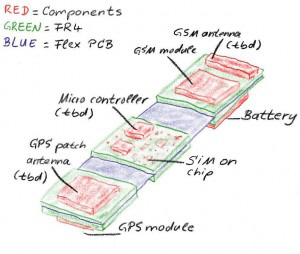State of the art Android smartphones of Sony Ericsson supports the radio link called ANT+. Sony Ericsson launched five different mobile phones with ANT+ radio inside on the 6th of January 2011 at CES in Las Vegas. The APIs you can download free of charge at http://www.thisisant.com/pages/developer-zone/android-api
Below is a list of the existing mobile phones that provide ANT connectivity are:
- Sony Ericsson Xperia Arc
- Sony Ericsson Xperia Neo
- Sony Ericsson Xperia Pro
- Sony Ericsson Xperia X8
- Sony Ericsson Xperia X10 Mini
- Sony Ericsson X10 Mini Pro
Seven further manufacturers of mobile phones will follow. There is a dongle available for the iPhone. There are USB dongles, mini SD cards and micro SD cards with ANT+ radio link on the market as well. ANT+ with its more than 300 members is a field approved 2400 MHz Ultra Low Power technology.
The smartphone with its ANT+ radio inside will access to the ANT+ radio module inside the box of the GSM/GPS tracking device. Behind the ANT+ radio will be a small micro controller. The communication link between the ANT+ module and the uC is a standard UART. The micro controller inside the box will have a wired link to the GSM module and GPS module as well. If the biker will leave the bike, then the alarm system in the rear reflector will be powered on automatically. The same result we will get by using of an active RFID tag. It is also possible to combine the active RFID tag with the ANT radio in the phone. If the phone or the RFID tag is moving away from the bike the alarm system will be powered on.
2400 MHz Ultra Low Power Radio module
The ANT AP2 module is a drop-in module based on the reference design of nRF24AP2, a new generation of ANT system on chip family from Nordic Semiconductor.
An F antenna is integrated on the small-sized 20mm by 20mm board. The module has been certified to comply with radio regulation or standards covering global markets include North America, Europe, Japan and Australia. The integrated module eases the burden for application and system developers from extensive RF and antenna design, and regulatory compliance testing, allowing quicker time to market. With is 8 ANT channels, the module is ideal to build control or hub nodes of a wireless sensor network.
Features of ANT AP2 module
- 2.4GHz worldwide ISM band
- 78 selectable RF channels (2403 to 2480 MHz)
- 20 x 20 mm drop-in module
- Ultra low power operation
- Simple sync/async serial interface
- Integrated antenna
- On board 32.768 kHz crystal oscillator
- Broadcast, acknowledged, or burst data transmissions
- ANT channel combined message rate up to 190Hz (8byte data payload)
- Minimum message rate per ANT channel 0.5 Hz
- Burst transfer rate up to 20Kbps (true data throughout)
- Up to 8 ANT channels
- Up to 3 public, managed and/or private network keys
- 1 Mbps RF data rate
- 1.9 to 3.6 V supply voltage range
- -40°C to +85°C operating temperature
The ANT module is for the prototypes only. My using of the ICs it will need very small space on your PCB. The inverted F antenna can be replaced to an loop antenna integrated in the PCB or to a ceramic chip antenna to save further space.
GSM/GPS modules on Flex rigid PCBs offers bending and new form factors
By using Flex rigid PCBs it is possible to bend the PCB and to get a good ground plane for the GSM and GPS antenna. Such PCBs can be useful for tracking of animals, banknotes or tracking of security officers. By tracking of animals the PCB can be mounted in the wrest band. Bundles of bank notes are a package of paper only. The security officer will get it mounted in the belt or in the jacket.
GSM/GPS modules, antennas and further use
- GSM module
- GPS module
- GPS antenna (sketch shows a patch antenna, loop or other type to be discussed)
- GSM antenna (sketch shows a lambda/4 monopole, other type to be discussed)
- Battery (sketch shows LiPo Battery, other tbd)
- SIM card (SIM on Chip, also called eSIM (other tbd)
- Micro controller (Microchip, ST, Oki, Renesas … tbd)
- Further options (tbd)
For the GSM/GPS tracker inside the back light of the bike we can use an 0,8 mm PCB of FR4 on Flex rigid PCBs are not necessary.
Do you have further questions and would like to start the development of your own wireless M2M app right now? We will be glad to share our more than 15 years in GSM and GPS plus 25 years in radio communication with you. Just send an e-mail to harald.naumann (at) gsm-modem.de
GSM/GPS modules, antennas and further use
- GSM module Telit GE865 / GL865 (small 22mm x 22 mm only, low power consumption)
- GPS module Fastrax IT430 or IT 520 (best in class in size and power consumption)
- GPS antenna (sketch shows a patch antenna, loop or other type to be discussed)
- GSM antenna (sketch shows a lambda/4 monopole, other type to be discussed)
- Battery (sketch shows LiPo Battery, other tbd)
- SIM card (SIM on Chip, also called eSIM (other tbd)
- Micro controller (Microchip, ST, Oki, Renesas … tbd)
- Further options (tbd)
For the GSM/GPS tracker inside the backlight of the bike we can use an 0,8 mm PCB of FR4. on Flex rigid PCBs are not necessary.

